Pearl Miki: Jewel of Shima City
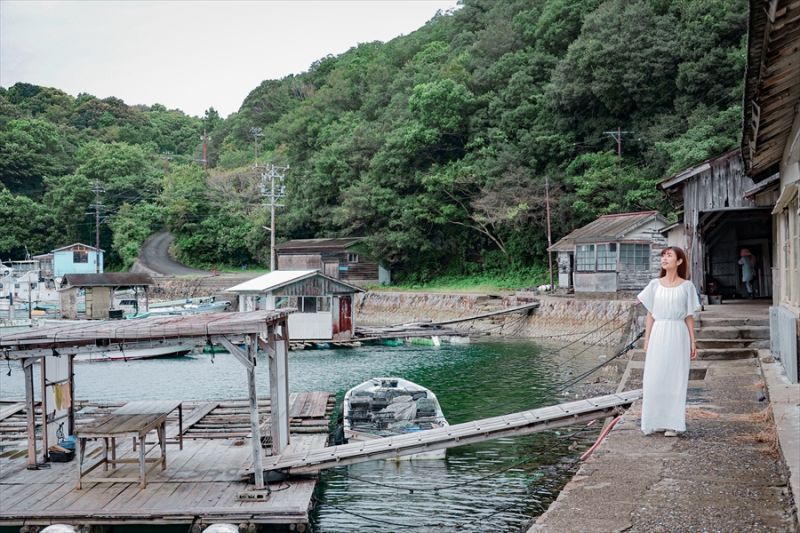
After the fifth visit or so to the same city for sightseeing, you may start to think that you have seen enough, but Mie Prefecture is the kind of place that will never allow you to go home empty handed.
One gem after another is unearthed, but it is just the start of your journey to an endless treasure trove of surprises. Today, let’s uncover a hidden jewel from Shima City - Pearl Miki.
Written by Cheeserland(https://cheeserland.com/)
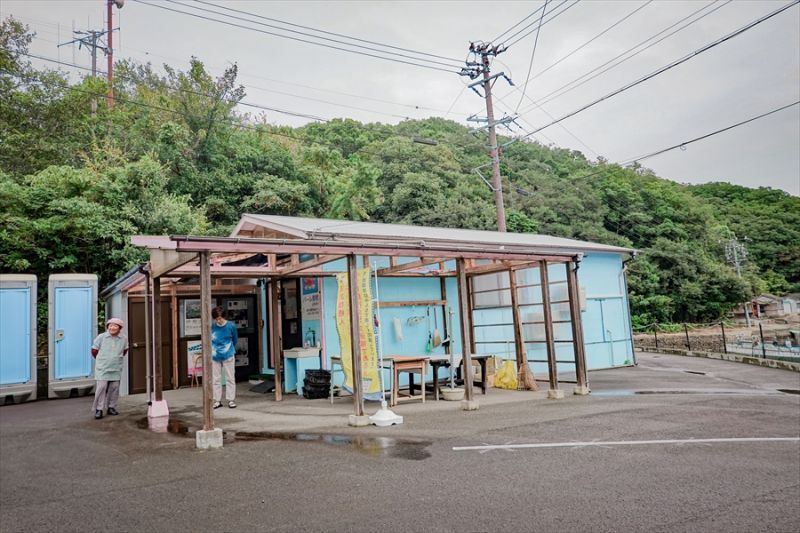
Arriving at a humble little hut tucked away beside Ago Bay, I was greeted by two ladies with big smiles.
If you need some context as to why the pearl culturing business is such a big thing in this region, know that the world’s first cultured pearl was successfully created in Ise-Shima area by the legendary Kokichi Mikimoto—yes, as you may have guessed from his family name—the founder of world-famous jewelry brand, Mikimoto. Mikimoto Pearl Island is located at Toba, a nearby city, where you can learn all about the stellar history of pearl cultivation in Mie Prefecture. (It’s also worth noting that although the names are similar, Pearl Miki is unaffiliated with Mikimoto.)
Well, I will spare you all the technical details today about operating on a pearl oyster, but if you are keen to learn, there are illustrations and real-life samples in the workshop for you to take a look at, and the staff are more than happy to answer any questions you may have.
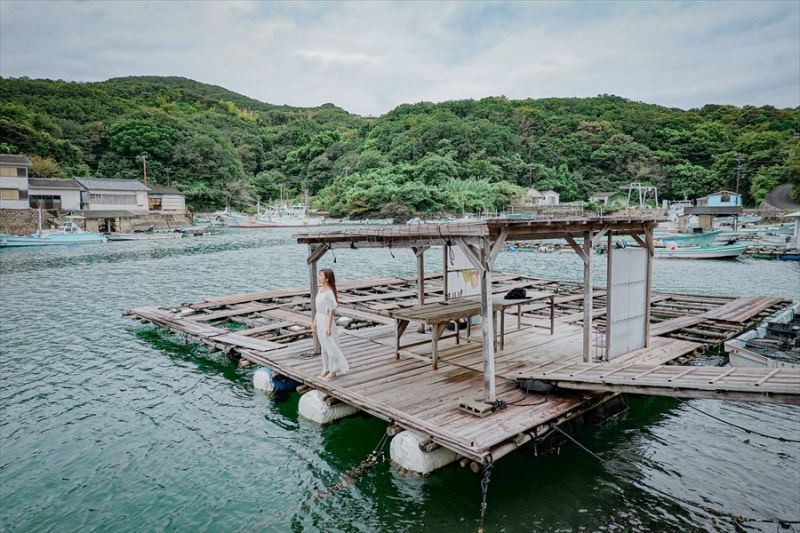
Toshiko-san, wearing a lovely sun bonnet, led us to the back of the facility, which revealed a stunning view of crystal clear waters, little fishing boats, a floating stage with lots of extended rafts stretching out into the sea. The pearl oysters apparently live right beneath.
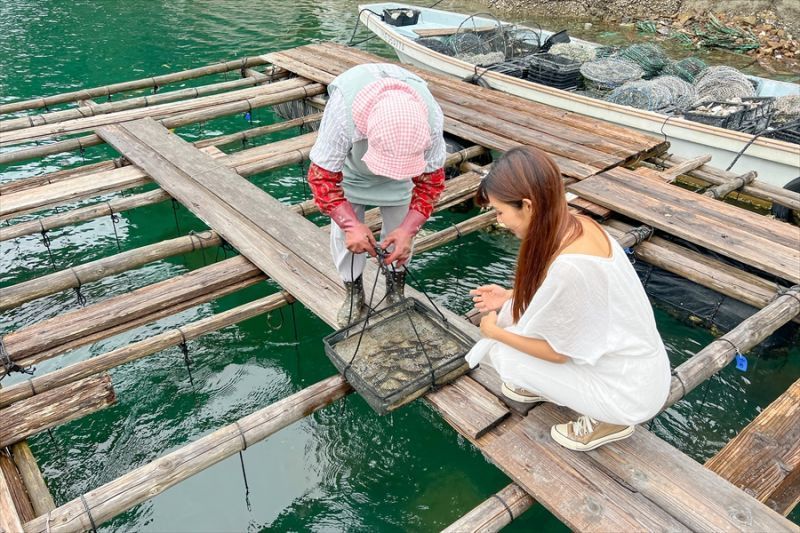
Pulling up a basket full of pearl oysters, Toshiko-san asked me to pick one, and taught me how to open it with a flat knife.
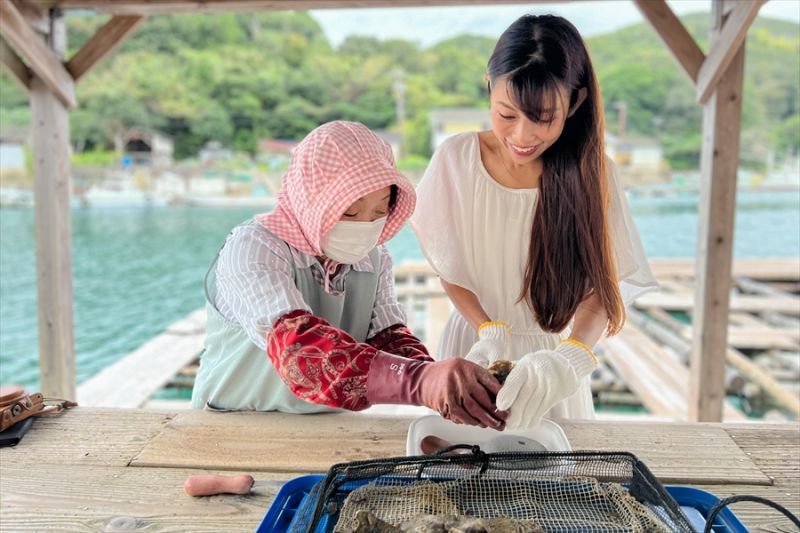
Delighted, I instantly spotted a gleaming bead in the shells, rather decent in diameter for such a modestly sized shellfish.
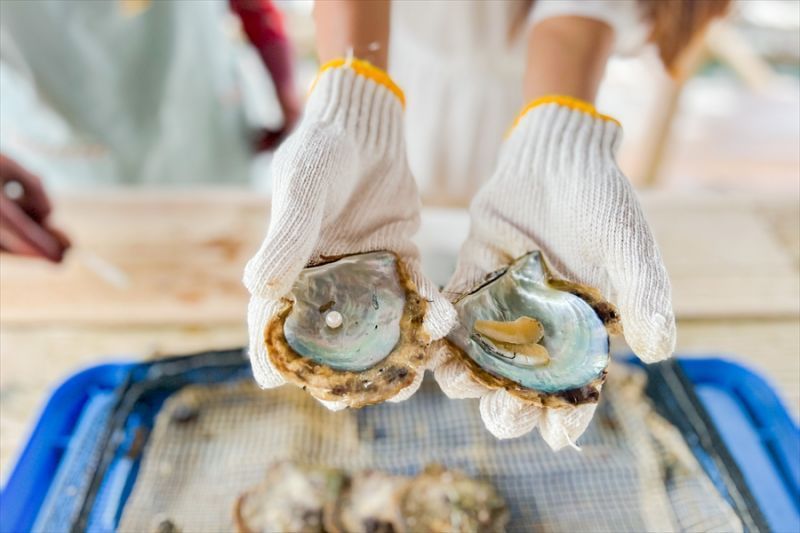
“You are lucky, that’s quite a beautiful pearl you found,” said Toshiko-san. Apparently a pearl of that size has to be of at least two years of age. She then proceeded to cut off the edible part of the oyster—the adductor muscle, and chopped the rest of the flesh into a pulp and handed it over to me.
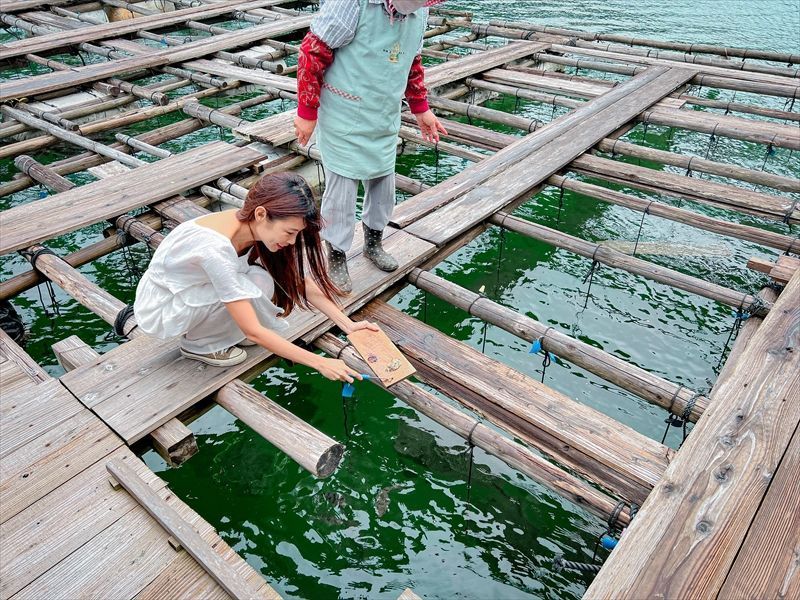
I promptly savored the small pieces of marine goodness seasoned perfectly by the sea water with silent gratitude and fed the rest to the fish under the oyster rafts.
I was told by Yamaoka-san, the owner of Pearl Miki, that the leftover flesh is sent away to be made into sustainable pearl compost, and the shells are often up-cycled into accessories. “Nothing goes to waste here,” Yamaoka-san said, smiling, proudly showing us the SDGs partnership certificate issued by Shima City, hanging on the wall.
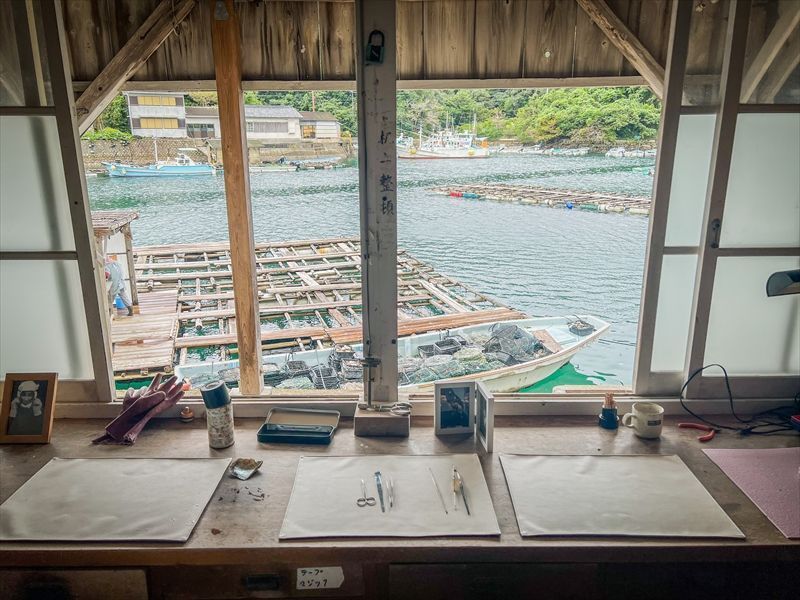
Since we had some time to spare, I was brought into a small old working space at the back. When asked about the history of Pearl Miki, Yamaoka-san explained that it was founded by her father almost a century ago. She went rummaging a little and placed a few wooden frames on the table. Laid out in front of us were old photographs of Pearl Miki during her father’s generation.
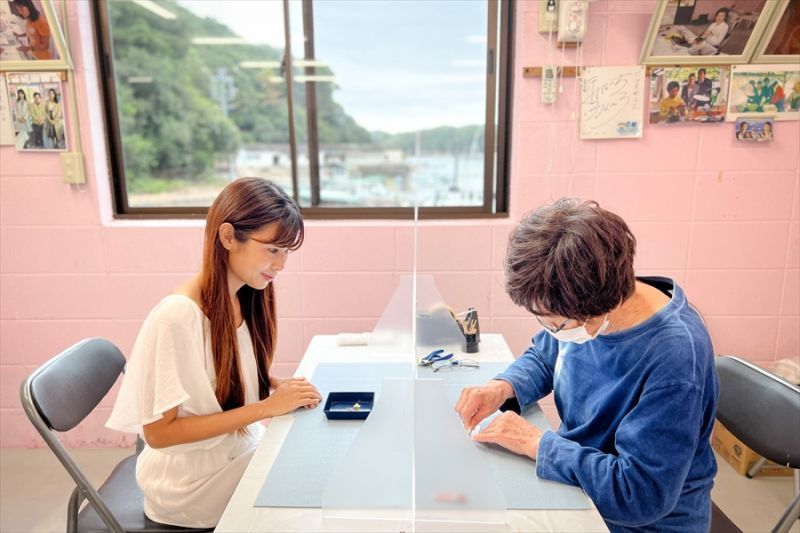
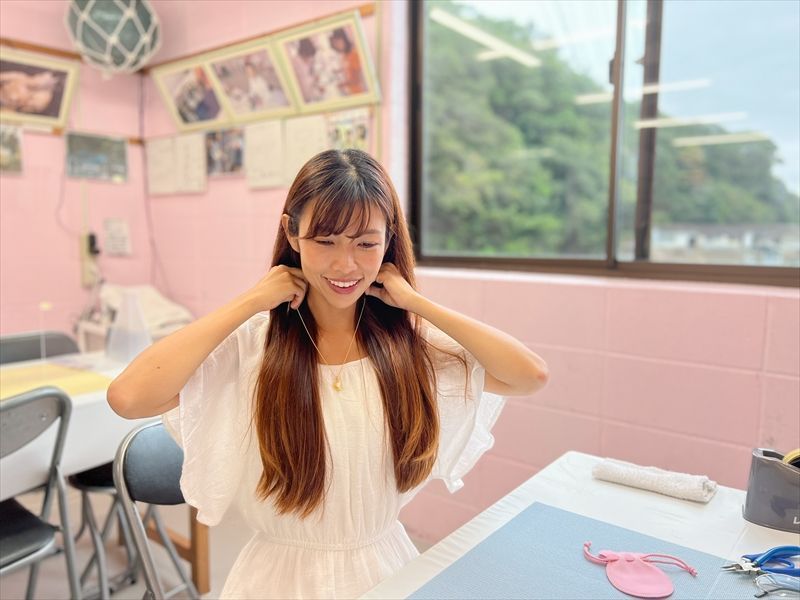
Back to the workshop, and it’s time to make my pearl accessory! I picked a golden chain that had a pretty shell pendant on it. Yamaoka-san then drilled a hole in my pearl, I applied some glue on the pendant and attached the pearl to it, and it was done.
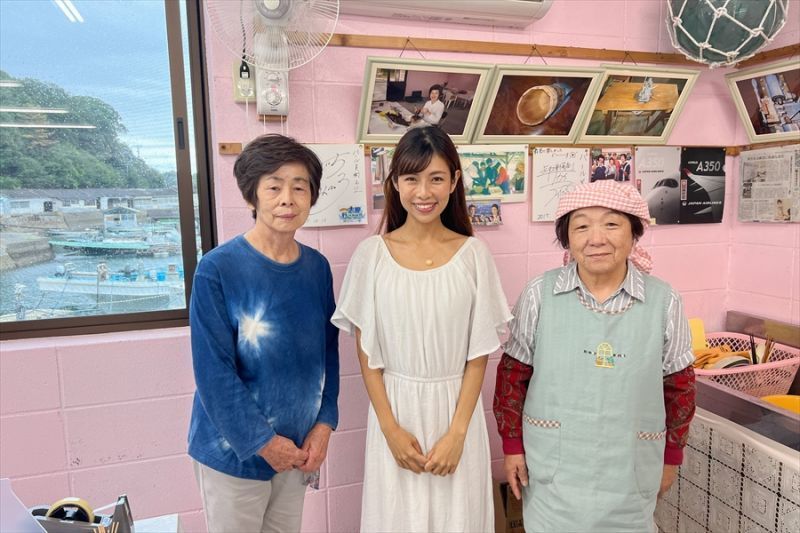
I thanked the two ladies, paid 1,700 yen for the pearl-extracting experience and another 1,500 yen for my choice of necklace and pendant. I was surprised at how affordable the whole affair was, given how much time Yamaoka-san and Toshiko-san spent with us—patiently and passionately explaining everything about these precious jewels.
We bid goodbye after a few long bows and profuse “arigatos.” I held on to the shiny, well-polished pearl I had just harvested, which is now an exquisite accessory around my neck, savoring the labor and history of it all and I thought to myself: these stories must live on.
And as a story teller, that’s what I can do for Japan—and people like Yamaoka-san and Toshiko-san.
And as a story teller, that’s what I can do for Japan—and people like Yamaoka-san and Toshiko-san.